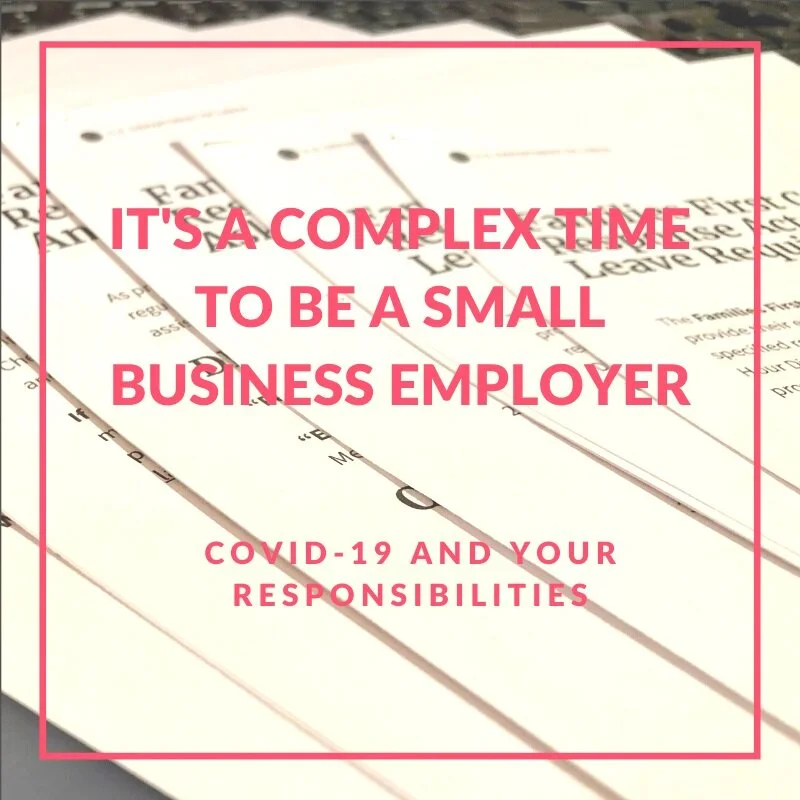
Dear Small Business Clients,
I am here for you!
These are complex times to be an employer. Making decisions about furloughs, layoffs, or business viability are emotionally taxing. Having helped some of you with these decisions, I’ve been in the trenches and feel some of that burden. The effects of COVID-19 not only impact your business but your workforce, individual team members, and their families. I’ve also been helping small business clients develop and roll out a new Families First Coronavirus Response Act (FFCRA) policy to guide them through these various leave situations. There are a lot of scenarios to consider between federal and state leave laws.
You, my clients, have largely focused on a balance between business viability with what's in the best interest of your workforce. What amazing humans you are to consider the whole during these stressful circumstances. I am encouraged by this level of leadership despite your heavy burden.
Federal FFCRA Paid Sick and Family Leave Policies effective April 1st.
The federal government legislated new leave policies that go into effect April 1st (tomorrow as of this post). This gives small businesses very little time to understand, prepare, and communicate about the new leave to their employees. I get that you are under a significant time crunch.
The Society of Human Resource Management (SHRM) for which I am a member and certified professional developed a comprehensive policy for employers. I’ve customized this policy for clients, and I’m happy to jump in and help you too. The important thing is that you read the law, understand what it is asking of you as an employer, and communicate it to your workforce ASAP. Like all employment policies, you will need to follow the policy once you roll it out. Employers are accountable to this new legislation beginning April 1st.
To do:
Develop a Families First Coronavirus Response Act policy. Contact me if you need help or a template to get you started.
Develop a pay code to track time for Emergency Paid Sick Time and ideally a separate one for Paid Family Leave. These codes will help you recoup the time in the form of a tax credit.
Post the Employee Rights poster in your workplace (break room/copy room) when you return to your office. In the meantime, digitally share (email is acceptable) this poster to your workforce along with your updated policy.
Review your states' COVID-19 Scenarios and Benefits Available poster. Washington (updated 3/26/2020) and Oregon (updated 3/23/2020).
Additional Resources:
Please reach out via email or phone if you have questions or need clarity, email or direct at 360-991-5727.
Stay healthy and safe!
HR Consultant to Small and Medium-sized Businesses










